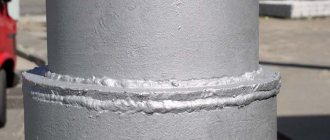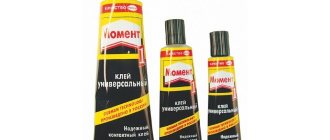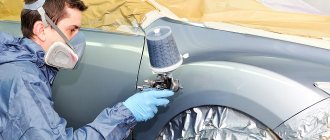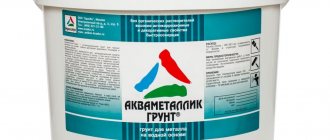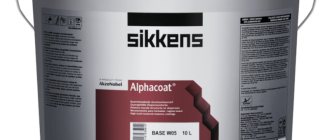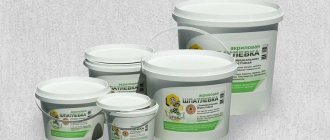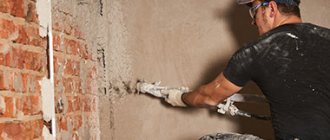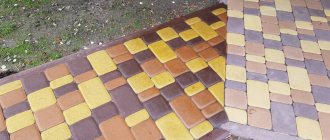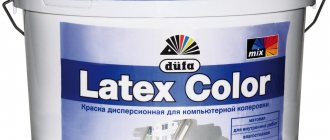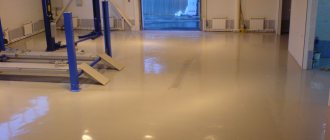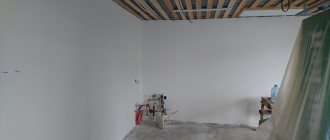What is it about
The primer is based on polymer substances - high-molecular chemical compounds of both organic and inorganic origin. Due to their high ability to form numerous strong chemical bonds, polymers are used in a huge number of areas of activity, where they show their properties unattainable by analogues. They did not bypass the construction sector, where a large number of finishing materials are created on a polymer basis.
Important! Since polymers are very numerous, the properties that they impart to the primer can be very different. Some options are traditionally universal, while others are more specialized. A prime example is the universal silicone primer, which can be used anywhere. However, there are options for internal use only.
Types of bitumen primer compositions
Due to the wide range of components, there is an extensive classification of soil. In addition to the compounds that will be described below, you can make the primer yourself.
Types, depending on composition:
- polymer-bitumen;
- mineral-bitumen;
- rubber-bitumen.
From the classification it can be assumed that the component that is paired with the bitumen compound affects the name.
Polymer - with the addition of polymers to the composition. It is distinguished by its ability to strongly protect the material from mechanical damage. This is due to polymers, which have a strong crystal lattice. When purchasing, the seller must show the presence of a quality certificate authorizing the sale of polymer compounds. This putty will cost a decent amount, but will provide a guarantee of quality.
Dolomatized and asphalt limestones are also added to the composition. Such compounds create a mineral-bitumen primer. For these products, the seller is also required to have an appropriate certificate authorizing the sale.
Rubber-bitumen is characterized by elasticity, thanks to the rubber that is in the composition. For the manufacture of products, recycled tires from cars that have passed their service life are used. The most commonly used primer is a bitumen primer under a polymer or rubber coating.
The main tasks solved using a polymer primer
In full accordance with other types of primer compositions, polymer variations are used on the surface prepared for painting or finishing in order to create conditions under which the finishing process will occur as efficiently as possible, and the end result will last a long time. In particular, the list of tasks to be solved is as follows:
- Creation of adhesion (the ability of a finish to penetrate deeply into the surface to be finished and reliably bind to it). The main task of the primer, which makes it an ideal solution for use in places that are initially not very suitable for finishing - surfaces that are too smooth or materials without pores;
- Reduced consumption of finishing material. Appears both with plaster and paint and varnish products;
- Filling minor defects and irregularities in the surface to be finished;
- Strengthening the surface to be finished, binding relatively weak fragments and dust.
Preparing the coating and applying polyurethane primer
Applying adhesive polymer mixtures is not a very complicated procedure. The surface is coated with the preparation using simple tools. The use of a spray gun or spray gun is not suitable for this process. For work you can use the following devices:
- Rollers of various sizes. You can purchase a tool that immediately covers a large area.
- With different brushes. They will help treat hard-to-reach places. They are not suitable for processing large concrete bases.
Before priming the base, it is necessary to treat the surface, adhering to the following steps:
- removal of dirt, dust, rust, scale and old finishing material;
- eliminating fat and oily traces using a solvent;
- washing and drying the base;
- filling large cracks with special putties or plaster.
Once all steps are completed, you can begin processing concrete, metal or wooden surfaces. The primer must be thoroughly mixed before use. After this, apply strokes with a roller from bottom to top. Allow the first layer to dry for 3-5 hours. The second application should be made horizontally. This cross-shaped method will ensure good impregnation. Once the primer has dried, you can begin finishing work.
Advantages of polymer primers
- The polymer base is much more durable than in the case of analogues of the same mineral origin;
- Polymers are extremely resistant to mechanical damage;
- After treatment with primer, an impermeable film is formed on the surface, which protects the wall from moisture;
- It is resistant to extreme temperatures and temperature changes, ultraviolet radiation, and various aggressive liquids, alkalis and acids. Fire resistance allows the primer to be used in rooms with high fire safety requirements;
- Compared to other types of primer, polymer primer dries extremely quickly. In general, working with it is simple and does not require serious professional skills;
- Completely safe for health. The release of harmful chemicals does not occur under any external influences.
Purpose and application
Depending on the area of application, bitumen primer has differences.
By purpose:
- On an adhesive basis, in order to insulate pipes or foundation walls;
- For metal, to protect metal structures. Thanks to its adhesive properties, the material has the ability to protect against moisture and other destructive effects;
- For preparing mineral bases (concrete surfaces). It is used for insulating and fastening the roof, usually on a flat surface, where slate will not be used. Has strong adhesion properties, which are necessary between coating layers.
Areas of application of polymer primer
Most types of products belonging to the category of polymer primers are compositions intended for asphalt, cement-concrete and brick bases. However, there are options such as bolix, which are also used for plasterboard and gypsum bases. If we consider this particular product, then it is mainly used before applying gypsum or cement plaster. In general, you can find variations for a variety of types of work, both internal and external, both in the field of private repairs and for large-scale road repairs.
Terms of use
In order for the product to give the desired results, it is important to strictly follow the instructions for its use.
Calculation of consumables
Material costs are affected by the viscosity of the substance and the method of its application. The most economical option is to use a spray gun to apply the product. However, this is only suitable for liquid substances that have a water base. Thick products are recommended to be applied with a roller or brush. It is also permissible to use the spill method.
The approximate consumption of the mixture is indicated on the label. On average, 150-500 grams of bitumen mastic are required per 1 square meter. For very porous substrates with many cracks, high flow rates must be planned.
Required Tools
The following types of tools may be required to apply bitumen primer:
- Spray gun. This device ensures uniform application of bitumen emulsion over the entire surface and minimal consumption of the composition per 1 square meter. In this case, the instructions must indicate the possibility of using a spray gun for the product.
- Brush. This device is suitable for priming small surfaces. It should not be used for large areas.
It is worth considering that fur or foam rollers should not be used for bitumen mastic. The liquid mass sticks to the surface of the instrument and causes its particles to stick together. As a result, the quality of application deteriorates and material costs increase.
Surface preparation
Before applying a bitumen primer, the surface must be properly prepared. To begin with, it is recommended to thoroughly clean it of debris, dust and dirt. The better the preparation, the higher the degree of adhesion.
The next stage of preparation is to prepare a primer. The process depends on the type of material. In most cases, cold emulsions are used. However, sometimes the composition needs to be slightly heated to certain temperatures.
See also
Composition and scope of application of zinc primers, their pros and cons
Primer application and drying time
It is recommended to apply primer only in dry and warm weather. After applying the primer, the surface should be protected from moisture for 1 day.
The composition can be applied with a brush, spray gun or some types of rollers. However, not all compounds can be applied with a spray gun. To ensure that this tool can be used, it is important to carefully study the technical specifications of the primer.
Brushes are usually used to treat small areas. To apply primer to large surfaces, you should use rollers. At the same time, it is not recommended to use fluffy tools for bitumen primer.
When using a viscous primer mixture, it is permissible to choose the pouring method. When using this method, it is recommended to pour the mixture onto the base and distribute it evenly over the surface with a rubber mop. The bottling method is used very rarely, since it is considered very expensive. On average, bituminous soil dries within 6 hours.
Precautions when working with material
When using bitumen mastic, it is recommended to adhere to the following rules:
- do not apply the composition near sources of open fire;
- carry out all work wearing canvas gloves;
- ensure adequate ventilation in the room.
When using the composition, avoid contact of the emulsion with the skin or eyes. If the substance gets on the skin, it must be washed off with a solvent. If the primer gets into your eyes, rinse them with water and consult a doctor.
Correct work with primer
- Before treatment, the surface must be cleaned of dirt and dust, fungus and mold. It is worth treating the surface to be treated with solvent 646 or acetone in order to get rid of grease stains that may not even be visible. It is better not to use white spirit, as it leaves a film on the surface that can reduce adhesion, which defeats the purpose of using a primer.
- The work itself is carried out at temperatures from +5 to +25 degrees Celsius. In this case, the humidity should not be high;
- The polymer primer is sold ready-to-use; no dilution is required. The only thing that should be done is to mix the composition to evenly distribute the components, since they may have settled during storage;
- The composition is applied in any convenient way. In the case of small surfaces to be treated, brushes can be used, but for large-scale work it is better to use a roller or even a spray device;
- Often you have to apply the composition in two layers. In this case, you should wait until the first one has completely dried, and only then apply the second one. Fortunately, such soil dries quickly.
Important! In the case of applying a primer for further finishing, work should be continued only after complete drying, which usually takes at least 6 hours. Sometimes it’s worth waiting even longer – up to a day.
One peek into the composition
- Acrylic or emulsion . It is considered universal and is suitable for preparing drywall, plaster, brick, wood, putty, and concrete. Only metal surfaces fall into the category of exceptions, since the composition of the soil does not include anti-corrosion additives.
ACRYL-PUTZ polymer primer
Acrylic compositions have a number of advantages, including the possibility of self-application, dilution with ordinary water, and quick drying within 2-4 hours. In addition, this soil is practically odorless, so it is suitable for indoor use.
Acrylic primer "Master"
Surface and deep-penetrating compositions are produced on an acrylic basis.
- Goodhim G.U.;
- Grida is frost-resistant;
- ECO ROOM.
- Alkyd . Most often used for preparing wood and metal, dries in 10-16 hours, not used for mineral surfaces.
- Polyurethane and epoxy . They are paints diluted with solvents. Most often used on concrete surfaces under enamel.
- Shellac . A fairly specific composition used for treating branches on coniferous wood. In addition, this primer can be used with water-soluble stains.
- Polystyrene . Suitable for plastered and wooden bases. It has high toxicity, so it is used for outdoor work and in non-residential, well-ventilated areas.
- Specialized in metal . They are divided into 3 categories: protective, insulating, phosphate.
The composition of insulating liquids includes red lead and zinc white, so they are inert to the metal and protect it mechanically from moisture penetration.
Insulating primers are of two broad groups, including phenol-formaldehyde and glyphthalic compounds. They have a fairly long drying time - up to 2 days.
Glypthal pigmented primer Belcolor
Protective/passivating has the palm in terms of reliability. It is used on both non-ferrous and ferrous metals, it contains up to 90% zinc, which makes it possible to use it in an aggressive environment.
Phosphate prevents the formation of rust and improves the adhesion of paint and metal. Before use, the primer is diluted with an acid thinner and applied in several layers. Used for ferrous metals in damp environments.
Homemade recipes
If you can’t buy a ready-made composition, you can make it yourself. To do this, 3 kilograms of bitumen will require 1 kilogram of gasoline. To obtain the desired composition, it is recommended to do the following:
- Prepare a heat-resistant container.
- Heat the bitumen and bring it to a boil. Mix everything to achieve a homogeneous consistency. Boiling bitumen must not be mixed with gasoline. It needs to be cooled to 80 degrees.
- Inject gasoline into the bitumen in small portions. Each time the composition must be thoroughly mixed.
- Strain the finished product. Undissolved fragments will make the soil of lower quality.
